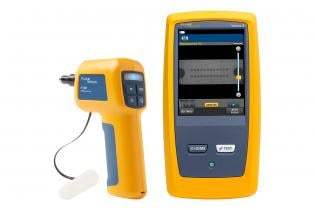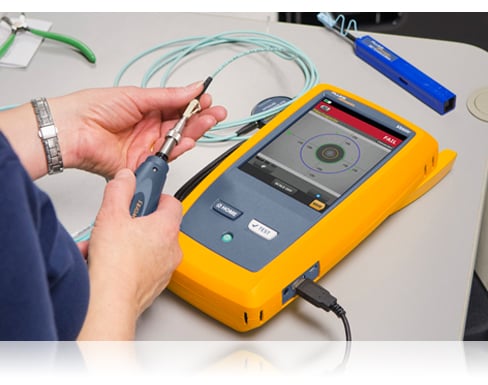Comprehending Exactly How an Optical Measurement System Improves Precision in Industrial Applications
Optical measurement systems play an essential role in enhancing accuracy across various industrial applications. By leveraging advanced technologies such as laser interferometry and 3D imaging sensing units, these systems supply high-resolution, non-contact dimensions. This ability decreases the risk of damaging delicate components while making certain accuracy. The effect of these systems extends past simple measurements. Discovering their advantages, applications, and future trends exposes a complicated landscape of technology and obstacles that values better evaluation.
The Essentials of Optical Measurement Systems
Optical measurement systems act as essential devices in numerous commercial applications, supplying specific information collection and analysis. These systems use light as a key methods of measurement, leveraging optical principles to evaluate dimensions, placements, and surface area qualities of things. They integrate components such as lasers, cameras, and sensors, which function together to record high-resolution photos and data.
The modern technology allows non-contact dimensions, reducing the danger of damaging delicate components. Optical measurement systems are functional, finding utility in top quality control, assembly confirmation, and dimensional analysis throughout different markets. They are specifically effective in atmospheres where traditional measurement strategies might fail, such as gauging complex geometries or observing fast activities.
As sectors remain to progress, the combination of optical measurement systems will certainly remain vital for making sure precision and performance, inevitably enhancing product quality and functional performance in various manufacturing procedures.
Trick Technologies Behind Optical Measurement
Trick technologies such as laser interferometry techniques and 3D imaging sensors play an essential duty in the efficiency of optical measurement systems (robotic vision). These technologies allow exact measurements and in-depth evaluation in numerous commercial applications. Understanding their performances is crucial for harnessing the complete capacity of optical measurement systems
Laser Interferometry Techniques
Numerous laser interferometry strategies have revolutionized the area of optical measurement, supplying extraordinary precision and precision in various industrial applications. These methods use the interference of coherent light waves to determine range, variation, and surface abnormalities with nanometer-level precision. Common approaches consist of Michelson interferometry, which splits a beam of light of light and evaluates phase changes, and Fabry-Pérot interferometry, understood for its high resolution in gauging little adjustments. Additionally, laser Doppler interferometry utilizes frequency shifts to assess rate, making it invaluable in vibrant measurements. The flexibility of these strategies permits their combination into diverse production processes, boosting quality control and making sure adherence to strict tolerances. Therefore, laser interferometry remains to play an important role ahead of time commercial measurement criteria.
3D Imaging Sensors
Developments in measurement technology have brought about the growth of 3D imaging sensing units, which play a significant duty in optical measurement systems. These sensors catch three-dimensional information via various techniques such as triangulation, time-of-flight, and organized light. By precisely reconstructing the shape and measurements of objects, 3D imaging sensing units improve the precision of measurements in commercial applications. They offer real-time responses, assisting in quality control and ensuring that elements fulfill stringent requirements. Additionally, their capability to run in challenging atmospheres, such as differing lights problems, makes them important in producing processes. As industries increasingly adopt automation, the integration of 3D imaging sensors into optical measurement systems is expected to drive more improvements in effectiveness and precision.
Benefits of Optical Measurement in Industry
Typical measurement techniques have actually long been the criterion in commercial setups, optical measurement systems supply significant advantages that boost precision and efficiency. These systems make use of light to catch data, leading to high-resolution measurements that are usually unattainable with standard techniques. The non-contact nature of optical dimensions lowers the threat of damaging delicate parts throughout the evaluation procedure. In addition, the rate of optical measurements enables fast data purchase, helping with prompt decision-making in hectic industrial atmospheres.
Optical systems are adaptable, with the ability of determining various materials and shapes without the need for comprehensive recalibration. This versatility adds to boosted process and efficiency. Additionally, the automation possibility of optical measurement systems minimizes human mistake, making sure constant quality control. On the whole, the combination of optical measurement technology stands for a dynamic shift towards enhanced accuracy and dependability in commercial procedures, eventually bring about improved item quality and operational effectiveness.
Applications of Optical Measurement Systems

Optical measurement go to this website systems play a pivotal function in boosting production process optimization by offering exact information for decision-making. These systems guarantee quality assurance assurance through real-time monitoring and analysis of manufacturing metrics. As markets significantly adopt these modern technologies, their effect on performance and item integrity becomes noticeable.
Manufacturing Process Optimization
Enhancing production process effectiveness is significantly dependent on the integration of optical measurement systems. These systems supply real-time information on numerous criteria, enabling manufacturers to evaluate procedures with a high level of precision. By enabling accurate measurements of measurements, surface area qualities, and product properties, optical measurement systems assist in the recognition of inadequacies and bottlenecks in assembly line. The immediate comments from these systems encourages designers to make enlightened decisions, resulting in enhanced machining, setting up, and completing procedures. The capacity to keep track of conditions continuously allows for adaptive changes, decreasing downtime and waste. As industries goal for greater productivity and decreased functional expenses, optical measurement you could try these out systems become crucial devices for improving production procedure optimization.

High Quality Control Guarantee
The combination of optical measurement systems substantially impacts top quality control guarantee in industrial setups. These systems give specific and non-destructive measurements, making it possible for manufacturers to find problems and deviations early in the production procedure. By making use of advanced imaging methods, such as laser triangulation and interferometry, optical measurement systems assure that parts meet rigid requirements. This assists in real-time surveillance, reducing waste and lessening the risk of malfunctioning items getting to the marketplace. Additionally, the data collected can be evaluated to improve production processes even more, causing continual renovation. Inevitably, the fostering of optical measurement systems enhances reliability go to my blog and uniformity in quality control, cultivating greater self-confidence amongst stakeholders and consumers alike in the final products supplied.
Instance Researches: Effective Implementations
Various markets have efficiently incorporated optical measurement systems to improve their operational effectiveness and product quality. In the automotive field, a popular maker embraced a laser triangulation system to keep track of the alignment of vehicle components. This execution greatly reduced assembly errors, resulting in improved safety and security and minimized costs.
In the aerospace sector, a leading airplane producer utilized optical metrology for accuracy dimensions of turbine blades, attaining a decrease in manufacturing tolerances and better efficiency standards.
In a similar way, a consumer electronic devices company implemented optical measurement modern technology throughout the production of mobile phone displays, leading to boosted high quality control and a decline in faulty products.
These study illustrate just how optical measurement systems not only boost precision yet also add to overall functional performance, demonstrating their value across different sectors. By attending to specific needs, these systems have actually verified to be crucial devices in modern-day industrial applications.
Challenges and Limitations of Optical Measurement
While optical measurement systems use substantial advantages in numerous commercial applications, they are not without their challenges and constraints. One major issue is level of sensitivity to ecological conditions, such as temperature variations, moisture, and dust, which can negatively impact measurement accuracy. Additionally, optical systems often require exact placement and calibration, making them at risk to human error during arrangement and procedure. An additional constraint is the potential for disturbance from ambient light, which can misshape dimensions and demand intricate filtering system methods. Certain products and surface areas may present difficulties, as reflective or clear features can lead to irregular readings. The cost of high-grade optical parts and systems can additionally be a barrier for some industries, restricting prevalent adoption. Specialized training is commonly required for personnel to effectively operate and maintain these systems, including to the overall intricacy and operational challenges.
Future Fads in Optical Measurement Modern Technology
As improvements in innovation remain to form commercial processes, the future of optical measurement systems is positioned for considerable evolution. Arising patterns indicate a change towards boosted combination of expert system and artificial intelligence, making it possible for systems to assess data in real-time, recognize patterns, and boost decision-making procedures. Furthermore, the development of miniaturized sensing units and progressed optics is expected to lead to more compact and flexible measurement options, making them obtainable for a wider series of applications.
Additionally, the consolidation of 3D imaging and high-resolution capacities will enable for extraordinary precision in measurements, which is necessary for sectors such as aerospace and automotive. The push for automation and Market 4.0 will certainly additionally drive the demand for optical measurement systems that can easily interface with various other modern technologies. As these patterns unravel, optical measurement systems will likely end up being integral to attaining better efficiency and precision across various industrial sectors.

Frequently Asked Concerns
How Do Optical Measurement Systems Contrast to Standard Measurement Methods?
Optical measurement systems supply higher accuracy and rate compared to conventional methods - optical fibre diameter analyser. They reduce human mistake, improve information collection effectiveness, and provide real-time outcomes, making them increasingly liked in various commercial applications for precise dimensions
What Industries Benefit one of the most From Optical Measurement Systems?
Optical measurement systems significantly profit industries such as aerospace, vehicle, and electronics. Their ability to supply high-precision measurements enhances high quality control, reduces manufacturing errors, and enhances overall effectiveness, making them necessary in competitive manufacturing environments.
Can Optical Measurement Systems Be Personalized for Details Applications?
Optical measurement systems can certainly be tailored for specific applications. By adjusting parameters such as wavelength, resolution, and calibration techniques, markets can customize these systems to meet special accuracy and accuracy demands efficiently.
What Is the Upkeep Need for Optical Measurement Systems?
The maintenance demands for optical measurement systems commonly include routine calibration, cleaning of optical elements, and software program updates. Sticking to these practices assurances precision, integrity, and long life of the measurement tools in various applications.
How Do Environmental Elements Impact Optical Measurement Precision?
Ecological factors, such as temperature fluctuations, humidity, and dirt, substantially influence optical measurement precision. These components can misshape light courses and hinder sensing unit analyses, ultimately jeopardizing the dependability and accuracy of measurements in industrial settings.